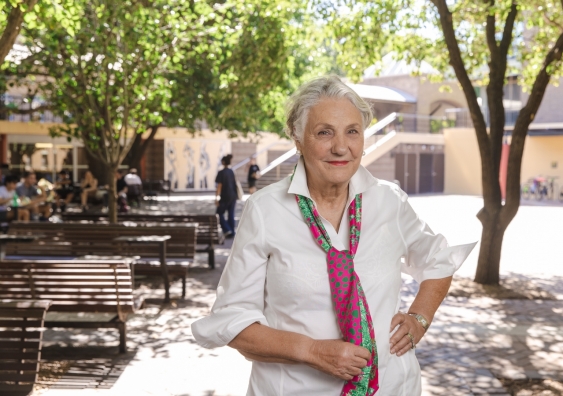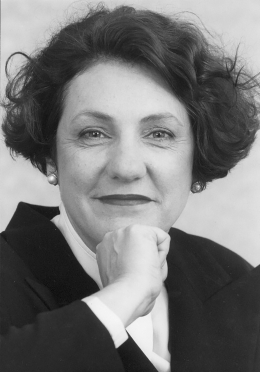Buildings and spaces renamed as part of Celebrating UNSW Women on Campus project
A UNSW Women's Trail across the Kensington and Paddington campuses includes digital profiles of past UNSW staff and students from all faculties and Canberra.
A UNSW Women's Trail across the Kensington and Paddington campuses includes digital profiles of past UNSW staff and students from all faculties and Canberra.

Trailblazing women from UNSW’s past and present are at the heart of a University-wide project to improve gender equity and the visibility of the University’s diverse community across its built and virtual environments.
The Celebrating UNSW Women on Campus project is led by the UNSW Council and the Division of Equity Diversity & Inclusion, in partnership with the Division of External Engagement, Estate Management, Archives, IT and student leaders.
The project will rename 17 buildings and spaces after UNSW women role models, including the first women graduates of each faculty, the first woman professor, the first woman Deputy Chancellor, the first Indigenous woman graduate, and many other alumnae and former staff who identify as women.
“As a leading Australian university, we need to be guiding the way in gender equality. We are proud to showcase the incredible community of UNSW women in a permanent way, to ensure they are celebrated and recognised for years to come,” said UNSW Chancellor David Gonski.
UNSW Vice-Chancellor and President Professor Attila Brungs said the campaign reflects the University’s ethos of equity and inclusion by ensuring the achievements of women are recognised and celebrated.
“Celebrating UNSW Women, at its heart, is making visible the incredible contributions of women to UNSW, and importantly, to society, throughout our entire history,” Professor Brungs said.
“If you look at our campuses, because of historical prejudice we haven’t celebrated or made visible the immense and incredible contribution UNSW women have made over the decades. The whole point of the project being led by Council was how do we not only redress that but, far more importantly, how do we inspire the next generation of UNSW women?”
The Celebrating UNSW Women on Campus project has three phases:
For Catherine Harris, who was the first woman to graduate from UNSW with a Bachelor of Commerce in Marketing in 1971, and later co-founded the eponymous fruit and vegetable chain Harris Farm Markets, the recognition is normalising women in leadership positions. Ms Harris served as UNSW Deputy Chancellor from 1999 - 2003.

Catherine Harris. Photo: UNSW Archives
“I think it is really important because it is a step in the right direction – so that younger women can see that there is an equal chance for women to do exactly what they want to do and achieve what they want to achieve,” said Ms Harris.
The space in front of the Central Lecture Block on the Kensington campus, currently known as the Commerce Courtyard, will be renamed ‘Catherine Harris Courtyard’.
Other spaces include the Central Lecture Block, which will be renamed the ‘Patricia O’Shane Building’ after Magistrate Patricia ‘Pat’ June O'Shane AM. An activist and trailblazer, Ms O’Shane was the first woman Aboriginal teacher in Queensland before studying law at UNSW and becoming the University’s first Aboriginal graduate in 1976.
The Chemical Sciences Building will be known as the ‘June Griffith Building’ in honour of Dr June Griffith, the first woman to graduate from UNSW. She was awarded a Bachelor of Science (Hons) in Applied Chemistry in 1952.
The Red Centre will become the ‘Anita B. Lawrence Centre’, named after the University's first woman architecture graduate and the first woman to receive a University Medal. She was granted a BArch with First Class Honours in 1955 and a Master of Architecture in 1957.
The Women’s Trail will wind across the Kensington and Paddington campuses with access to digital profiles of celebrated students and staff, like four-time Paralympian and London 2020 gold medallist Prue Watt OAM, who graduated with a Bachelor of Science in 2017.
“The visibility of women and their stories is a really amazing part of this project,” Ms Watt said. “It is really important for women and girls to know these stories and to know women from diverse backgrounds and diverse roles, and to understand and to learn that their voices and their views matter.”
Professor Eileen Baldry, who was the inaugural Deputy Vice-Chancellor, Equity Diversity & Inclusion and the first female Deputy Vice-Chancellor at UNSW, said an equitable naming policy emphasises the importance of visibility for the full spectrum of UNSW’s diverse community.
“One of the things that UNSW has had for a long, long time is the visibility of men's names. For example, all the buildings that currently have names, are named after men, apart from the Esme Timbery Creative Practice Lab which opened in 2019,” Professor Baldry said.
“And that makes them visible. That makes them part of the success story of this University. If we don’t have similar visibility of women, then we continue under a totally false understanding because the University has been strongly influenced and created by women, as well, and by LGBTIQ+ people and people with disability.”
Read more:
The signage for Celebrating UNSW Women, including the Women’s Trail and the new building and space names, will be installed across the Kensington and Paddington campuses between by 7 April. The new names of buildings and spaces will be implemented from Term 2. Until then, all room booking systems, timetables and maps will show the current building and space names.
The Celebrating UNSW Women Project will launch at an event on Tuesday 18 April from 5:30-7pm in the Roundhouse.
for the Celebrating UNSW Women Project launch event.